Architects have long been informed by shapes and forms found in nature. It looks as if pinecones, mushrooms and hop cones have been an inspiration to these roundels aiming to recreate complex organic structures for those who enjoy idiosyncrasies of living in circular spaces.

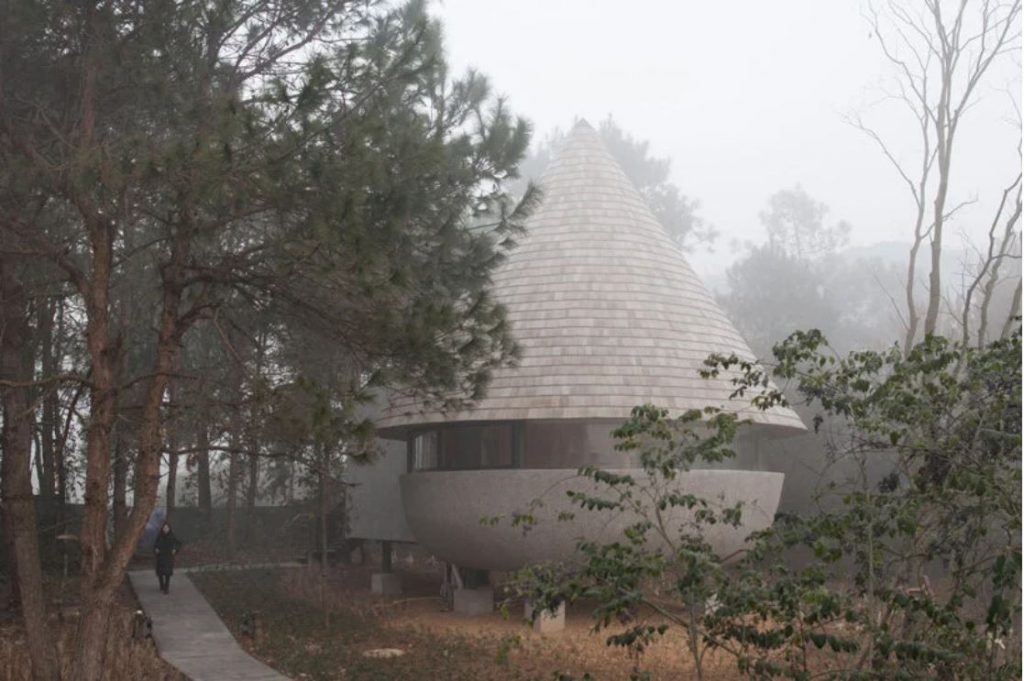
The Mushroom guesthouse by ZJJZ
The Mushroom guesthouse in a pine forest in China, designed by local ZJJZ Atelier, is composed of two simple volumes – a circular and a rectangular one – lifted above the ground on a steel structure to minimize an impact of construction on the site.

The Mushroom guesthouse by ZJJZ
The main, circular, part of the building is topped with a large cone-shaped roof clad in pine wood shingles that has given the house its name. The rest of the house is coated with granolithic concrete. Both concrete and wood shingles are chosen for their ability to change colour with humidity and time, which will allow the structure to age beautifully blending in with the surrounding natural environment.
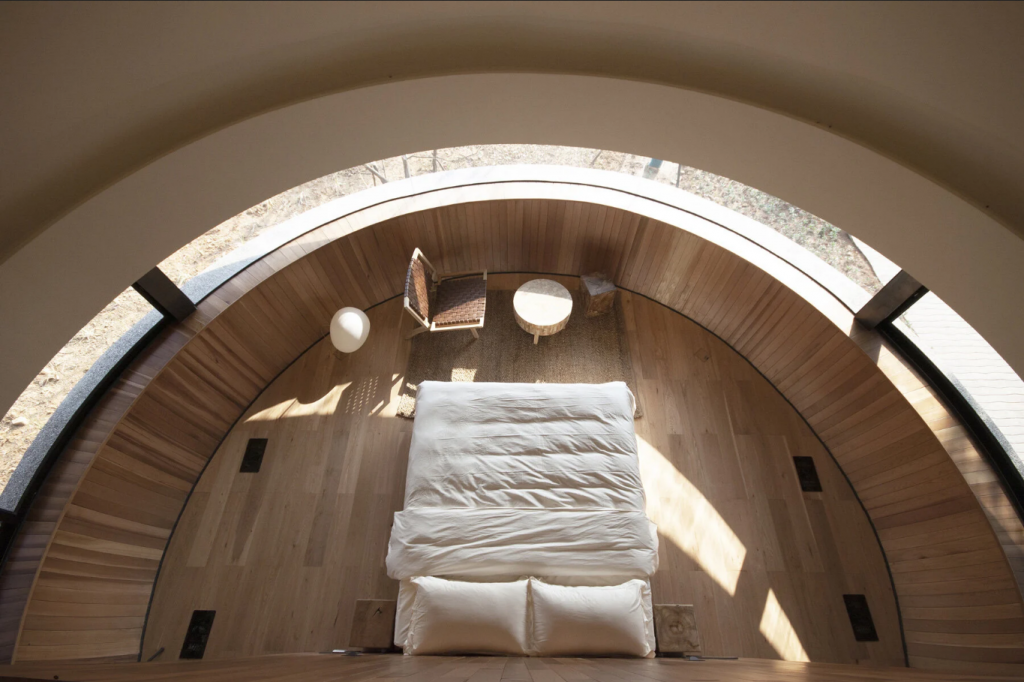
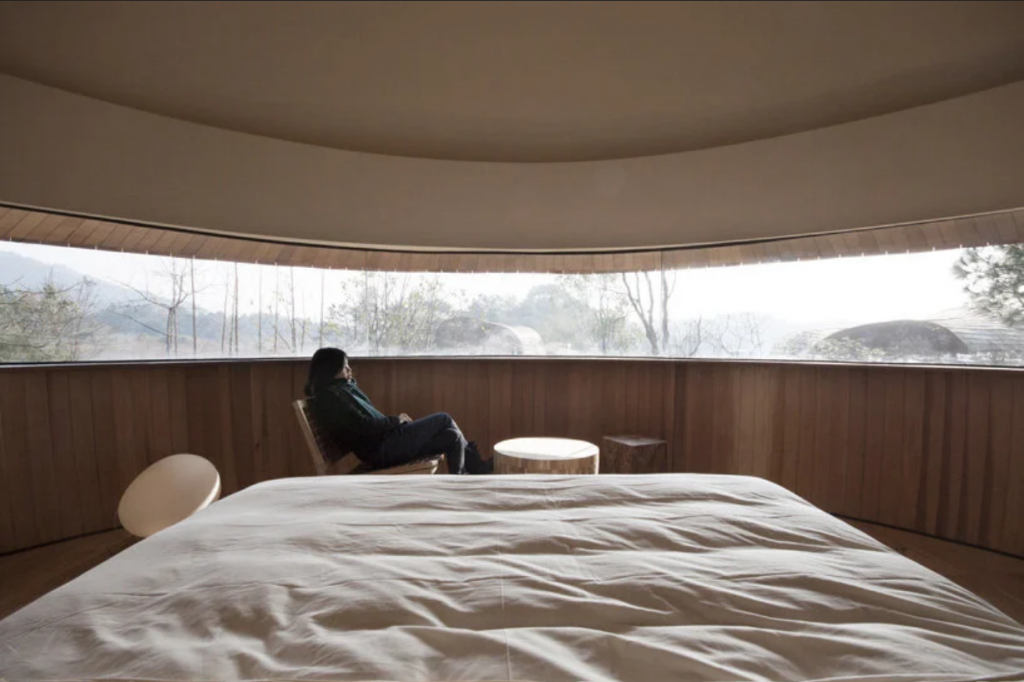
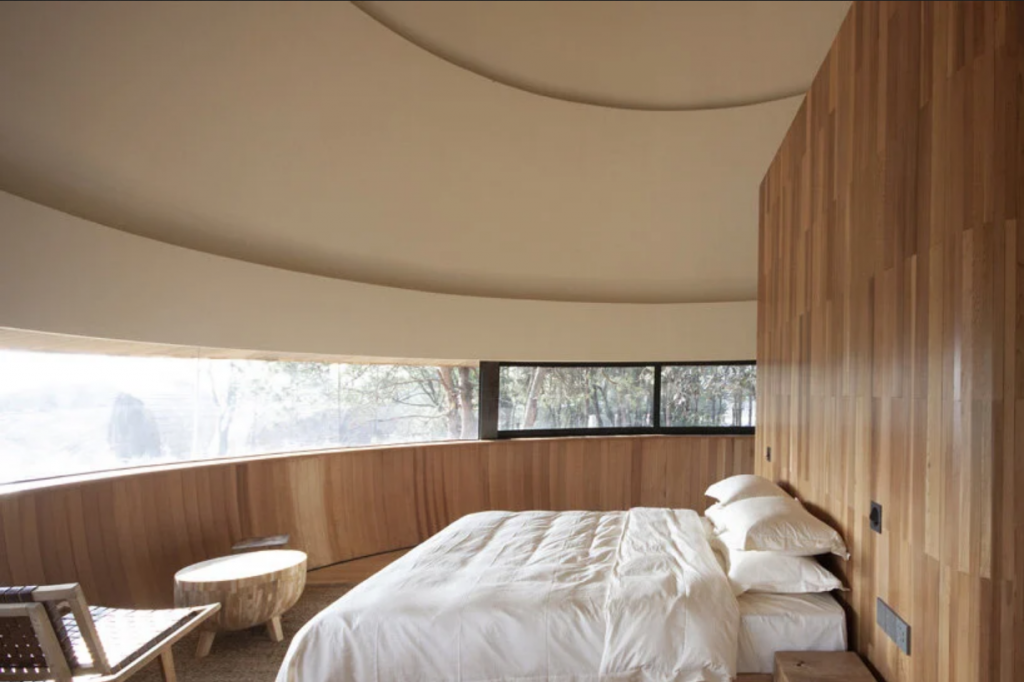
The Mushroom guesthouse by ZJJZ
The circular space of the guesthouse accommodates the main bedroom, which features a panoramic window that immerses visitors in the surrounding nature. Accessed by the small-scale staircase is a loft that serves as a children’s area. Inside, the cone-shaped roof is pure white and rounded at the top, which creates a sense of unbounded extension to the space.
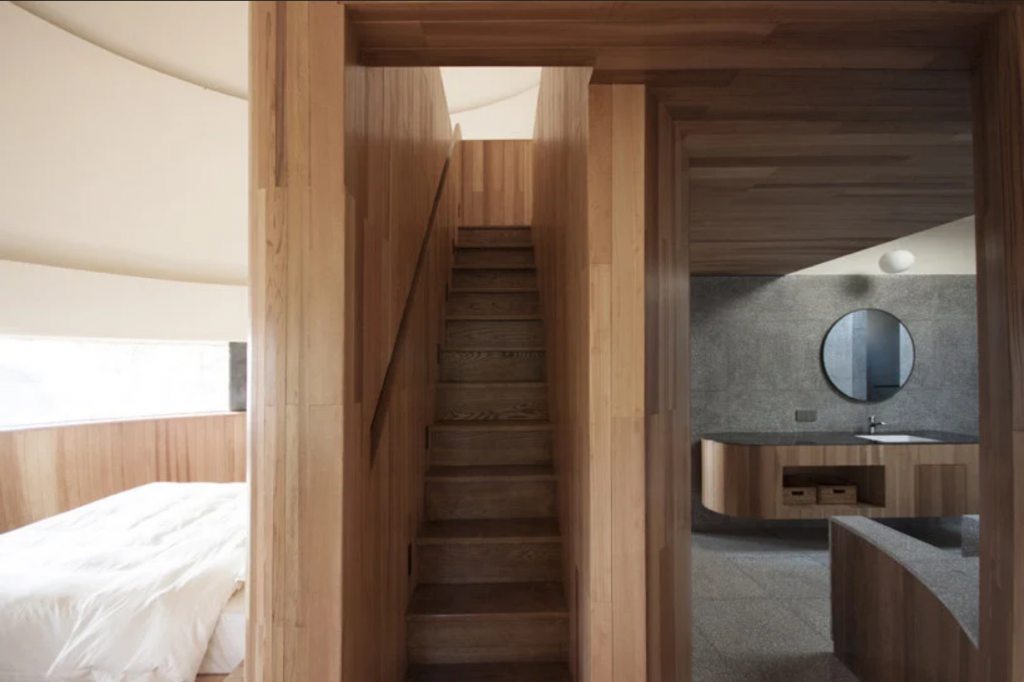
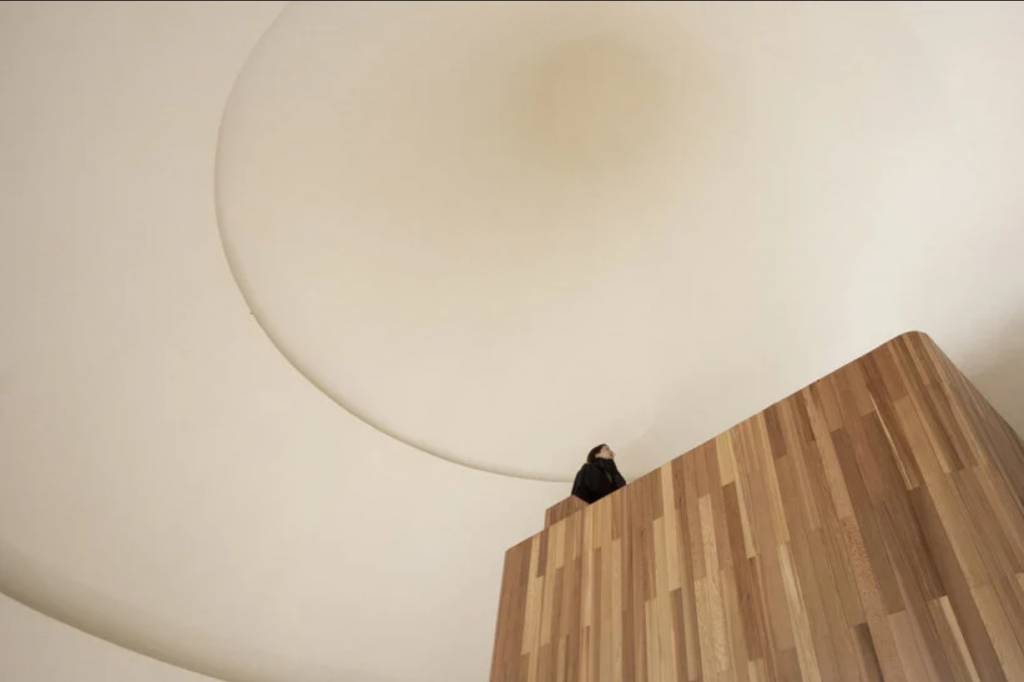
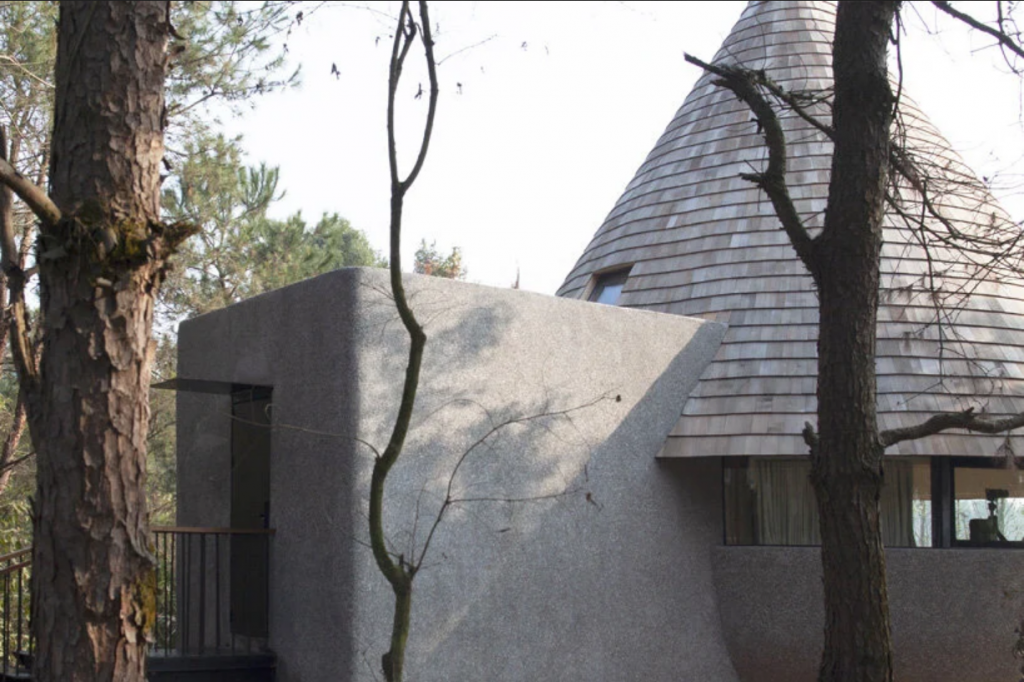
The Mushroom guesthouse by ZJJZ
Adjoining the circular part is a simple rectangular volume enclosing a bathroom and a storage space. A horizontal window next to the bathtub brings nature into the space, while the circular skylight at the top introduces different expressions of light and shadows as the lighting situation changes during the day.
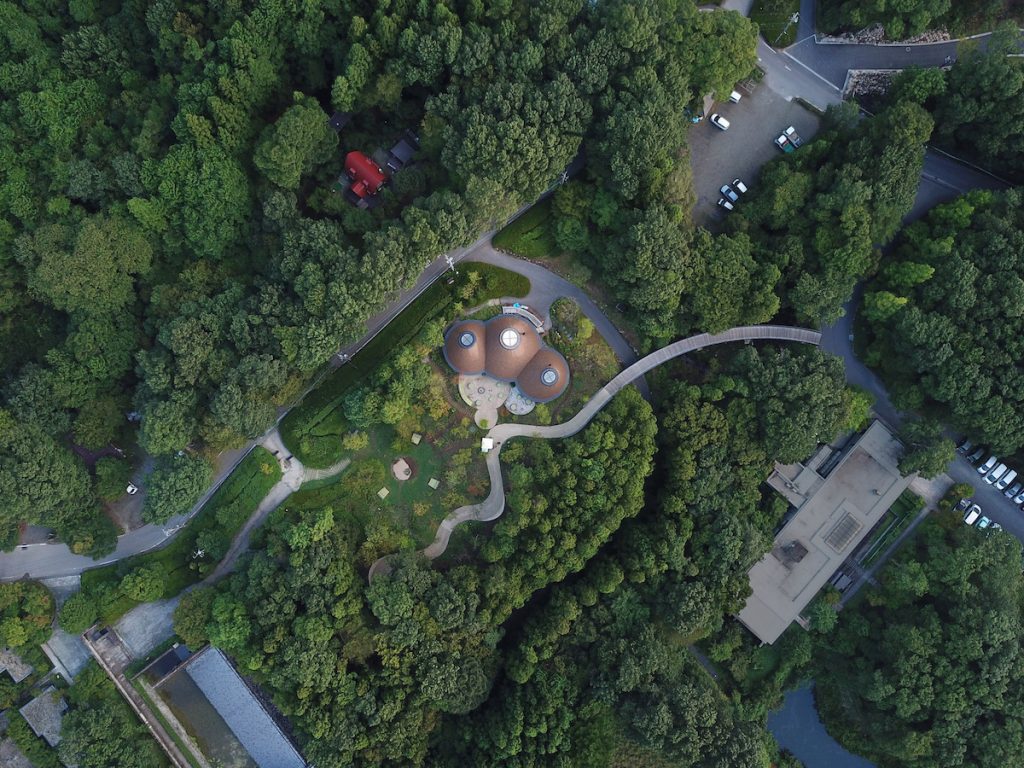

PokoPoko Clubhouse by Klein Dytham Architecture (also header image)
The PokoPoko Clubhouse designed by Klein Dytham Architecture (KDa), a multi-disciplinary design practice based in Tokyo, is an extension of the Risonare Hotel in Japan, which is meant to provide a peaceful forest retreat for families. Aptly named PokoPoko (a Japanese word meaning stick out or stick up), the addition comprises three joined cone-shaped roofs extending up to meet the treetops around them.
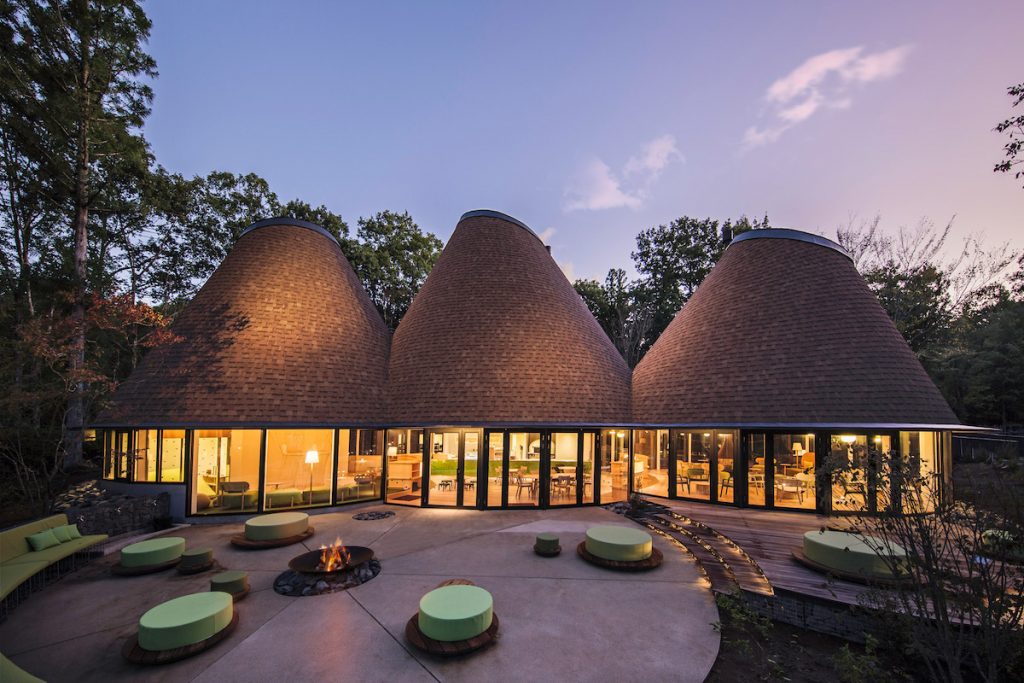
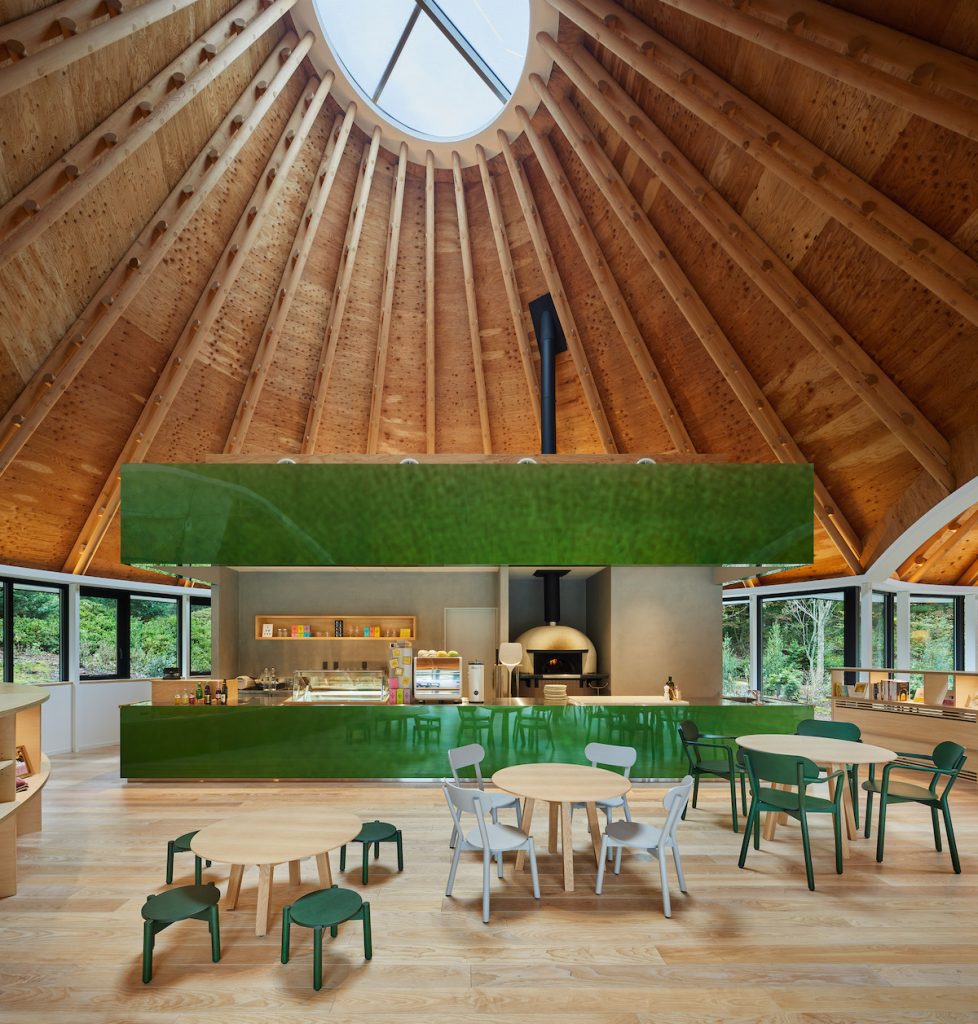
PokoPoko Clubhouse by Klein Dytham Architecture
Each of the three curving cones sits on full-height glass facades enabling occupants to enjoy the view of the serene woodlands around and accommodates a different function. The central one hosts an array of cooking facilities where visitors can take part in cooking workshops and classes.


PokoPoko Clubhouse by Klein Dytham Architecture
Two other cones feature a play area for children built around a white net that acts as a climbing structure, and a peaceful refuge for older members of the family, which includes an open fireplace and a small library. Circular skylights at the top of each roof fill the spaces with plenty of natural light.
Connected with the original resort by a footbridge through the forest, the clubhouse is mostly made from local pine trees that are also used to create the incredible interior spaces.
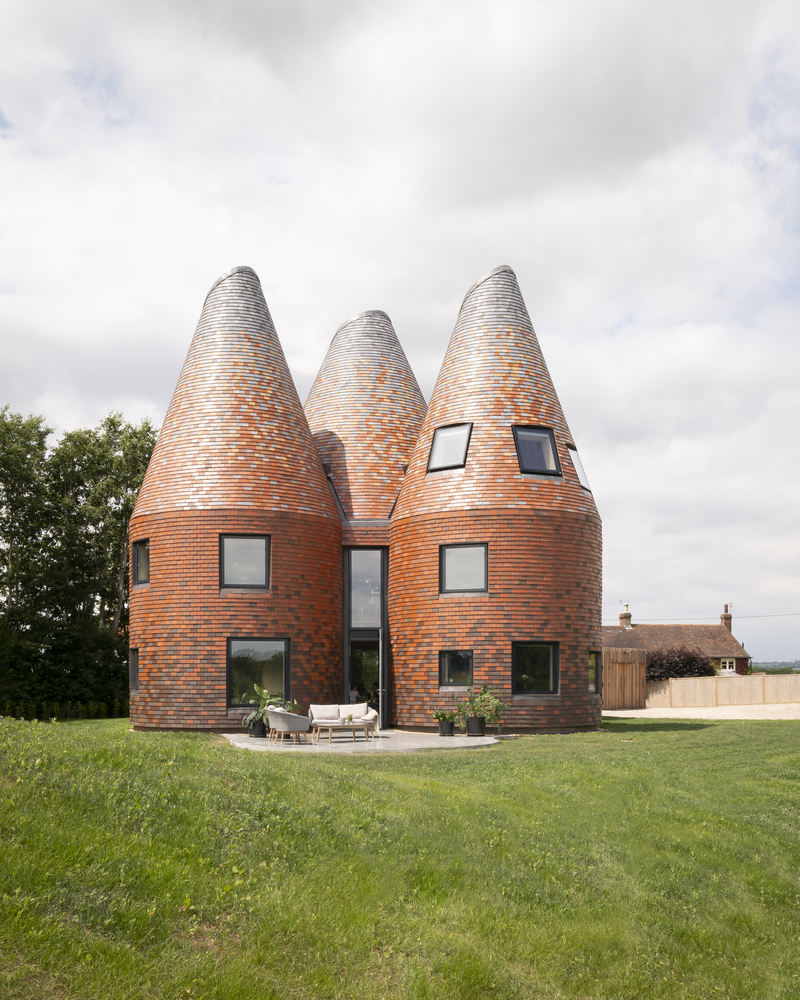

Bumpers Oast by ACME (ph: Jim Stephenson)
London-based studio ACME has derived Bumpers Oast, a residence in Kent, England, from a vernacular architecture of the houses used to dry hops as part of the beer-brewing process. The building encompasses four shingle-clad round towers.

Bumpers Oast by ACME
The structures stand slightly apart from one another but are all connected to a triple-height central space that opens out to an orchard and forms the heart of the house, which enables the occupants to enjoy the views not only outwards, but also inwards. This was made possible by assembling the frame with thick timber modules, topped by cones manufactured offsite and then craned into position.
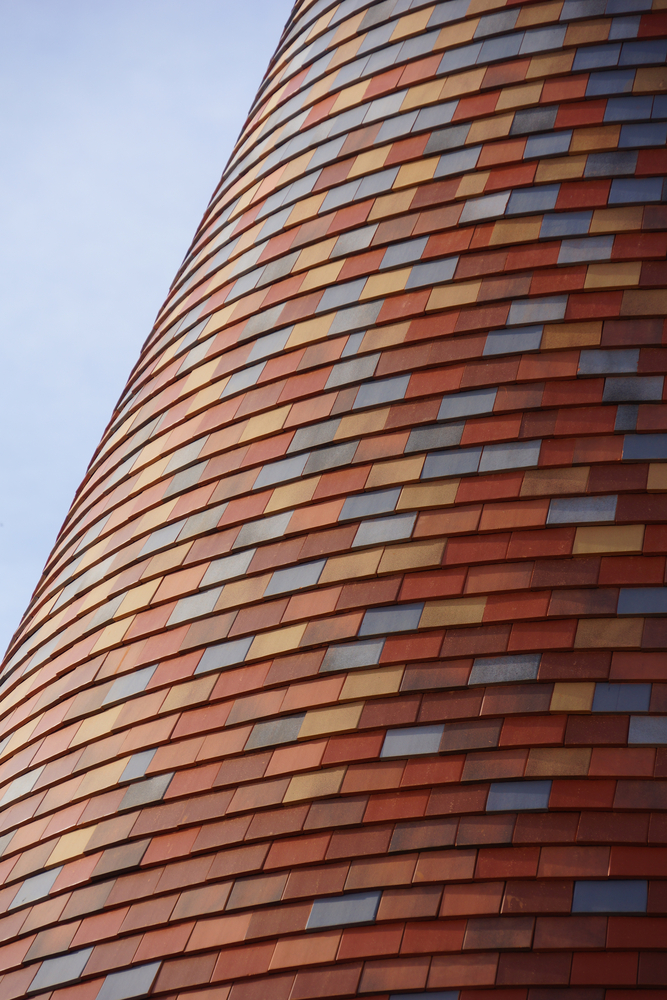
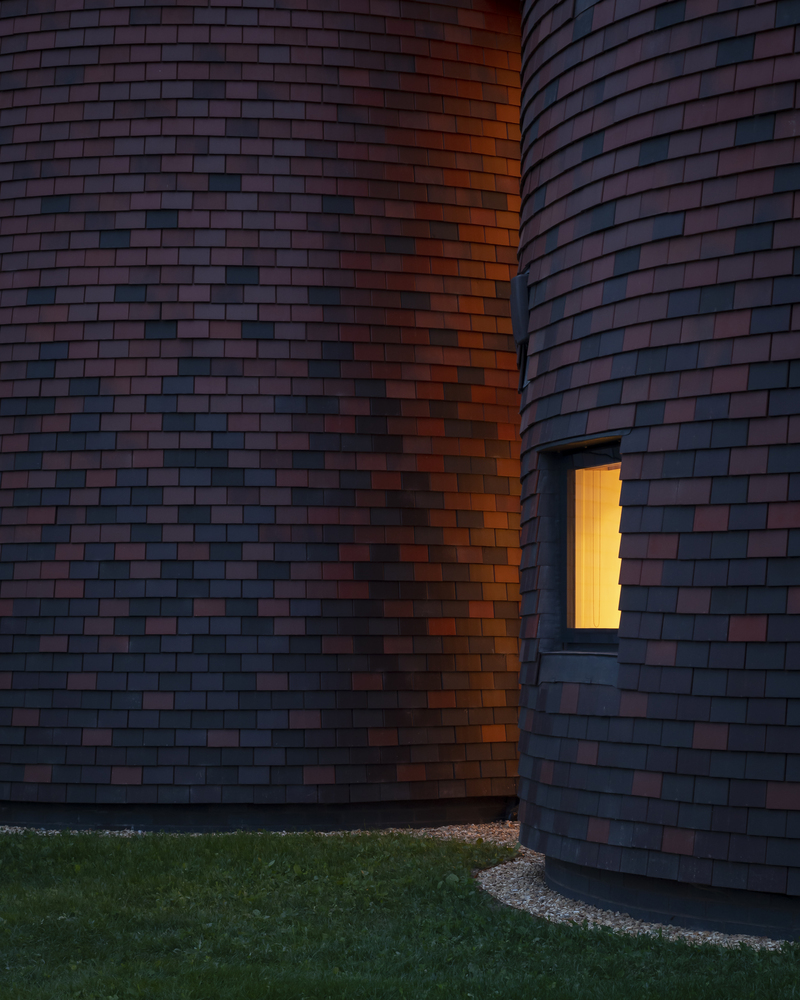
Bumpers Oast by ACME
The proportions of the volumes are based on a traditional oast. The exterior is clad with locally produced Kent-style tiles in six shades that fade slowly from dark red at the base to light orange at the tip. There are over 41,000 tiles used above eaves across the whole façade, each of them individually cut.
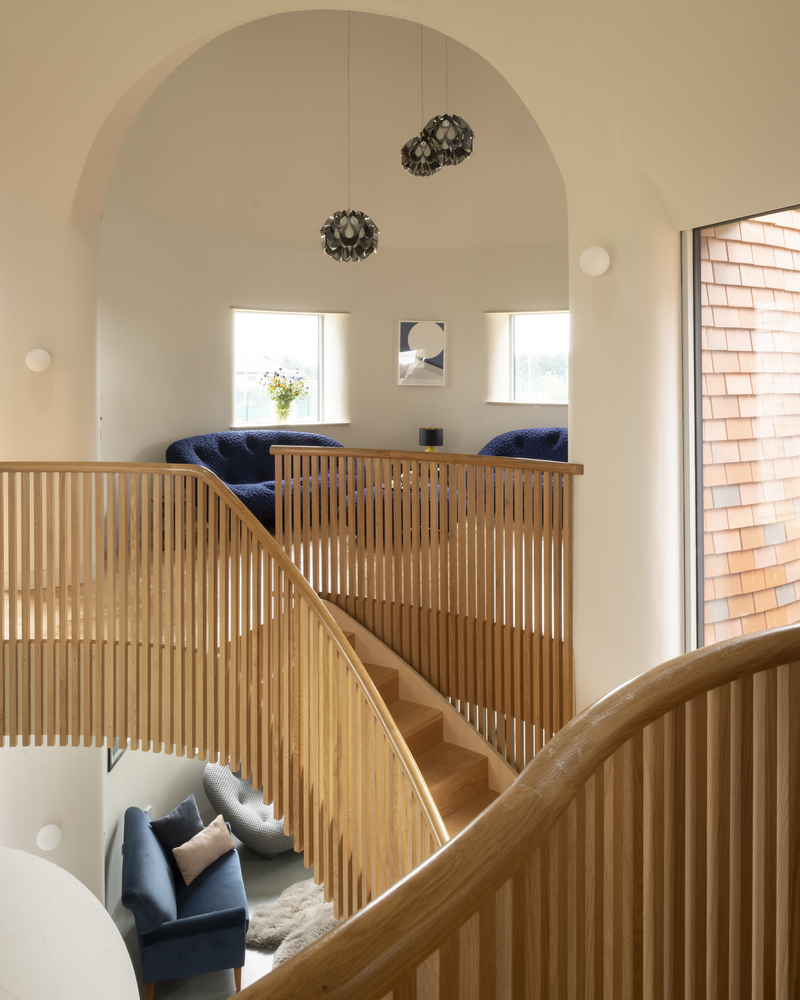
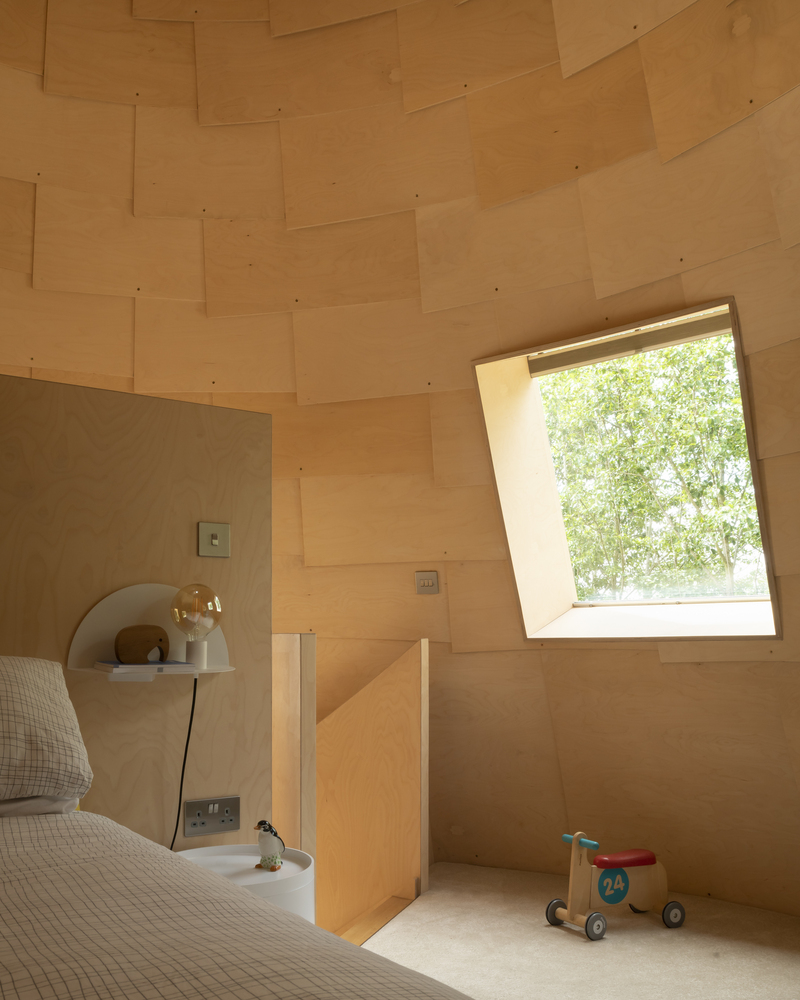
Bumpers Oast by ACME
Each tower accommodates a certain function, such as bedrooms, bathrooms, and service spaces. All bedrooms are situated on the first floor, boasting its own private staircase to access an upper level in the roof cone. This, according to the architects, creates “a building that is entirely communal on the ground, shared on the first, and full of secluded treehouse-like retreats on the second floor.” The bathrooms are designed as open-plan niches with no screens, therefore the room size is meant to match its purpose and allow for in-built storage.

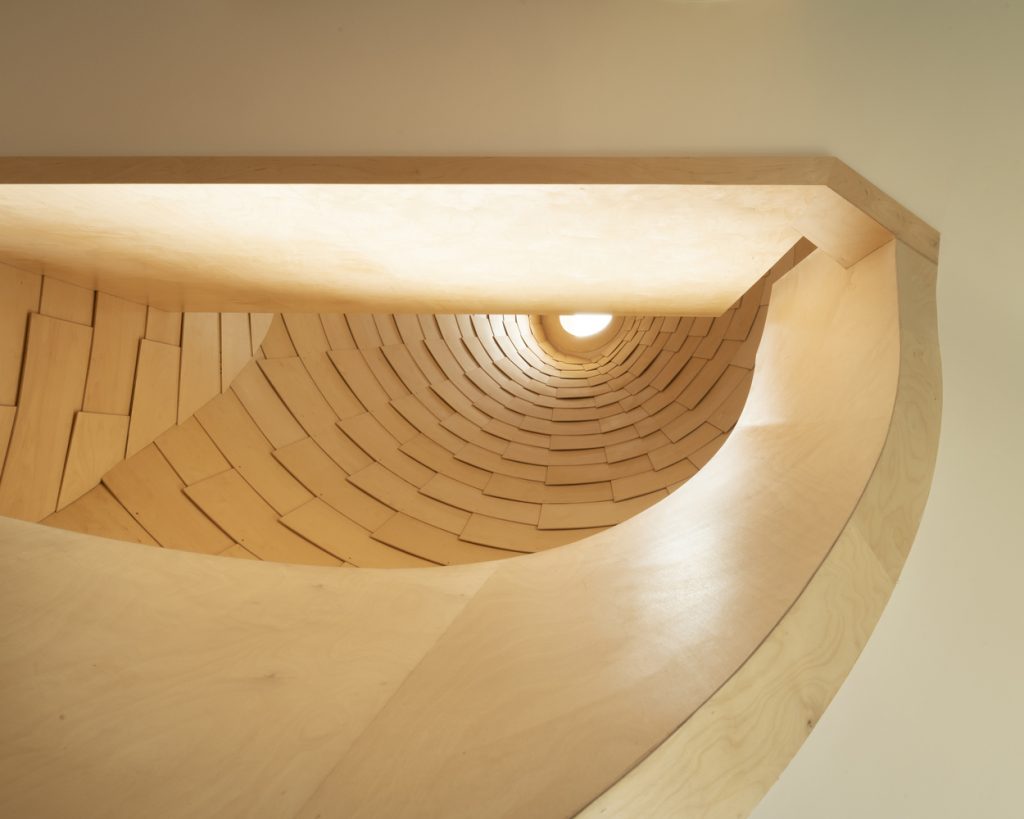

Bumpers Oast by ACME
The material palette for the interior features polished concrete for the floor and plywood for the rest of the surfaces, solid and gently curving for the cylindrical parts of the walls and cut into overlapping shingles for the inside of the cones.